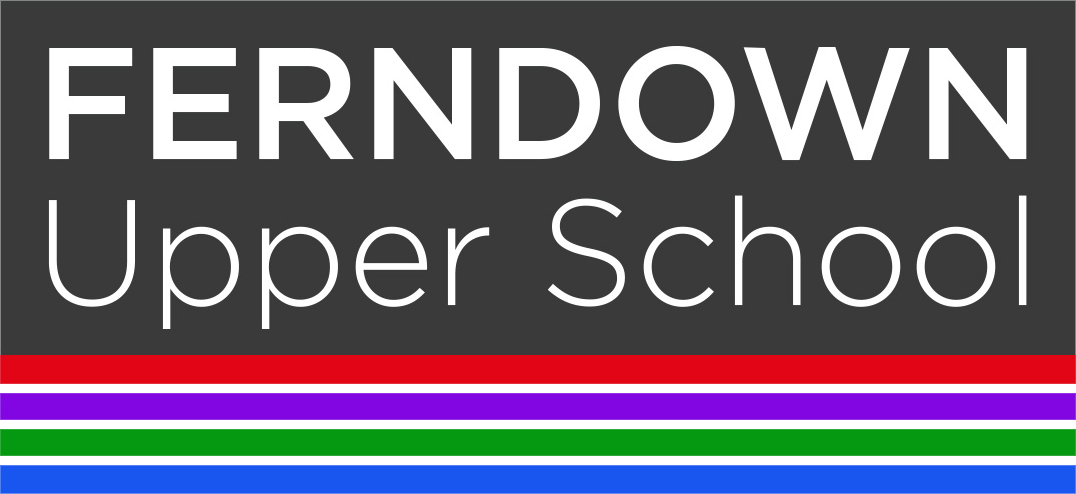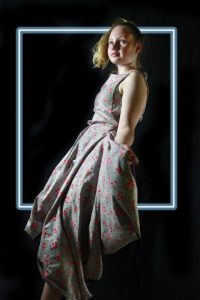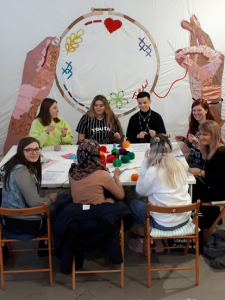Welcome to Fashion & Textiles
“Fashion is the second most profitable industry in the world. I think it’s really important to make a statement.” Richard Quinn, London Fashion Week 2018
Welcome to Textiles at Ferndown Upper School where we believe in offering a creative curriculum which allows students to learn a diverse range of practical skills relevant to future careers in the fashion and textile industry. Exploring a range of media, expressing ideas, recording observations and generating a personal response to contemporary themes enables learners to evolve into conscientious, empathic artists, designers and craftspeople. We make dynamic fashion and textile outcomes; we innovate, we think outside the box, we express ideas, personalities and opinions. We design sustainably, collaborate kindly, explore new technologies and develop individual skills and techniques. We support fashion futures; whilst achieving excellent GCSE (Progress 8 score over +1 in 2021) and A Level results (100% A*/B 2020) is important, we also offer a wealth of enrichment including extra- curricular clubs, gallery and museum visits, online webinars and careers events, subject specialist workshops and visiting artists, competition entries (Design Innovation award 2018: Technology in Textiles; Cockbaine Shield, Dorset Textile prize: Dorset Asset 2019 and 2018, Clothes Show Young Designer 2016) cat walk fashion shows, annual exhibitions and responding to live design briefs. In the textiles department we look forward to shaping your future and supporting you on your own personal learning journey here at FUS.
Meet the Fashion & Textiles Department Staff

Mrs. C. Hardman
Fashion & Textiles Teacher
Curriculum
Year 9 Textiles:
Fashion Illustration, Street style Superhero
Branding, advertising and fashion promotion: Logos and monogram designs; T shirt printing and laser cut pendants.
GCSE Textiles:
Material exploration, machine skills, mixed media surface pattern and print design. Silk painting, batik, weaving, monoprint, screen printing, laser cut textiles, block printing and tie dye. Machine embroidery, hand sewing, interior design and fashion. Garment construction, pattern drafting, costume design and corsetry. Historical loans and museum visits.
Specifications AQA: GCSE Textiles 60% Portfolio 40% Practical exam
AQA: A Level Textiles 60% Portfolio 40% Practical exam
Facilities/ Equipment
Laser cutter
Screen printing facilities- large scale
Specialist print room
Tailor’s dummies and mannequins
Janome sewing machines
Machine embroidery
Batik
Silk painting
Block printing
Dye room
Shibori and tie dye
Photoshop fashion illustration
Fashion drawing and photography
Styling and promotion
Extra-curricular
Tuesday and Thursday open door workshops
Holiday workshops
Sew Jessalli, Blandford
Blandford Fashion Museum
The Victoria and Albert Museum
The Stitch Festival
AUB Summer shows
The Clothes Show
Revision Practical after school workshops
Holiday workshops
Curriculum Content of each academic year
Year 9 | |
Course | Content |
KS3 National Curriculum Textiles 1 lesson a fortnight | Autumn: Baseline test- Experimentation with media. Design principles: Fashion context Assessment Objective 1, 2, 3 Spring: Formal elements and design principles. Fashion illustration, design and layout. Assessment Objective 1, 2, 3, 4 Summer: Material exploration; pattern, weave, print. CAD & 2D design skills. GCSE intro Summer 2. Assessment objective 2 |
How its assessed: | Peer, self-assessment and teacher review GCSE assessment objective linked |
Year 10 | |
Course/ Exam Board | Content |
AQA Art and Design Textiles GCSE Component 1: Portfolio: Coursework | Unit 1: Fashioned from Nature: Textiles principles, material exploration, basic construction skills and sketchbooks. 3D product, garment customisation, textile artwork, C&C understanding and development of personal response; AO4. 5 hour coursework day: Final piece – personal response. (Year 10/11) Unit 2: Narrative costume – critical and contextual research: AO1, AO2. |
How its assessed: | Teacher assessment, internal standardisation, moderator visit/ online moderation |
Year 11 | |
Course/ Exam Board | Content |
AQA Art and Design Textiles GCSE Component 1: Portfolio 60% Coursework: Component 2: Externally set exam 40% Externally set assignment Exam: 10 hours – Period of sustained focus | Narrative textiles- issues based personal project Garment construction, coursework outcome and understanding historical costume genre. Externally set exam- Component 2 Externally set assignment conclusion: 10 hour exam– component 1 and 2 internally assessed and standardised. |
How its assessed: | Teacher assessment, internal standardisation, moderator visit/ online moderation |
Year 12 | |
Course/ Exam Board | Content |
AQA A Level Art and Design Textiles Component 1: Portfolio 60% Coursework Exam: 10 hours – Period of sustained focus | Component 1: Portfolio Environment- Extended material workshops and innovation. C & C understanding. Responding to a brief. Environment conclusion. Mock exam unit 1st February- May half term; 10 hour sustained focus. Post May half term Personal Investigation starts |
How its assessed: | Teacher assessment, internal standardisation, moderator visit/ online moderation |
Year 13 | |
Course/ Exam Board | Content |
AQA A Level Art and Design Textiles Component 1: Portfolio – Personal Investigation – 1500 word written personal study Component 2: Externally set exam 40% Externally set assignment | Personal Investigation- Student formulated project Personal Investigation conclusion. Externally set exam unit 1st Feb: Component 2 15 hours period of practical sustained focus: final piece |
How its assessed: | Teacher assessment, internal standardisation, moderator visit/ online moderation |
Textiles Careers Information
Fashion and Textile students are skilled practitioners who can work with a range of materials and techniques; carry out visual research and generate original ideas. They can evaluate and reflect critically on work, understand design principles relating to colour, texture and pattern and contextualise their ideas culturally and historically. Studying textiles can lead to a diverse range of creative careers in the fashion and textile industries including print, knit, weave, digital, photography, retail, interiors, furnishing, product, materials, fashion, props, theatre and costume design/ construction. From weaves and dyes to stitches, silhouettes and tailored cuts – if you study fashion and/or textiles you’ll need an artistic eye, attention to detail and impeccable skill. Design has the power to change the world, the potential to affect positive change and innovate in sustainable futures contributing to our climate change revolution.
“If the UK’s creative industries are to continue to be world-leading….studying the arts improves students’ grades across the board, too, and equips young people with the skills required in a future job market. After all, in a world of growing automation, creativity is what makes us human”
Rt Hon Ed Vaizy, MP
Labour Market Information (LMI):
Statistics shown here reflect the potential for the study of Textiles to lead to lucrative and fulfilling careers. The “UK fashion industry currently employs 800,000 people and is worth £66 billion to the UK economy.” NSEAD 2017 National Society for Educators in Art and Design
The pandemic has sparked discussion around the future of fashion, providing a platform for a more ethical model for the industry. Changing consumer habits and awareness of personal responsibility reflect exciting new developments in the fashion and textile industries. The following sites show useful business forecasts and reflect current industry stats. https://www.ukft.org/business-advice/industry-reports-and-stats/
https://www.britishcouncil.org/research-policy-insight/insight-articles/power-fashion
The LMI for All portal provides high quality, reliable LMI information – see link below: https://www.lmiforall.org.uk/
Pathways Example Post 16
Level 2 Students can apply for apprenticeships such as manufacturing operatives
Level 3 A Level Textiles
Individuals can enter employment with level 3 qualifications or continue to develop by studying level 4.
Level 4 BTEC National Diploma in Foundation Studies in Art and Design leads onto diverse range of Undergraduate Degree options at University or Apprenticeships in specialist fields.




